Safety at Sea – Lessons Learned

Last weekend Chris & I attended a two-day Safety at Sea Seminar hosted by the San Francisco Yacht Club in beautiful Tiburon, CA.
The course is accredited by US Sailing and is a requirement for Double-Handed crews entered in Pacific Cup next year (or 30% of the members of a fully-crewed boat). Even though it was required for the race next year I wanted to take the course regardless and it turned out to be time well spent. There were a number of surprises or lessons learned that I want to share:
- Those little white Kidde fire extinguishers that are common on boats are only half the size required by the ORC special regulations for offshore racing. In general I feel the ORC regulations are also excellent guidance for offshore cruisers as they face the same dangers as a boat racing offshore.
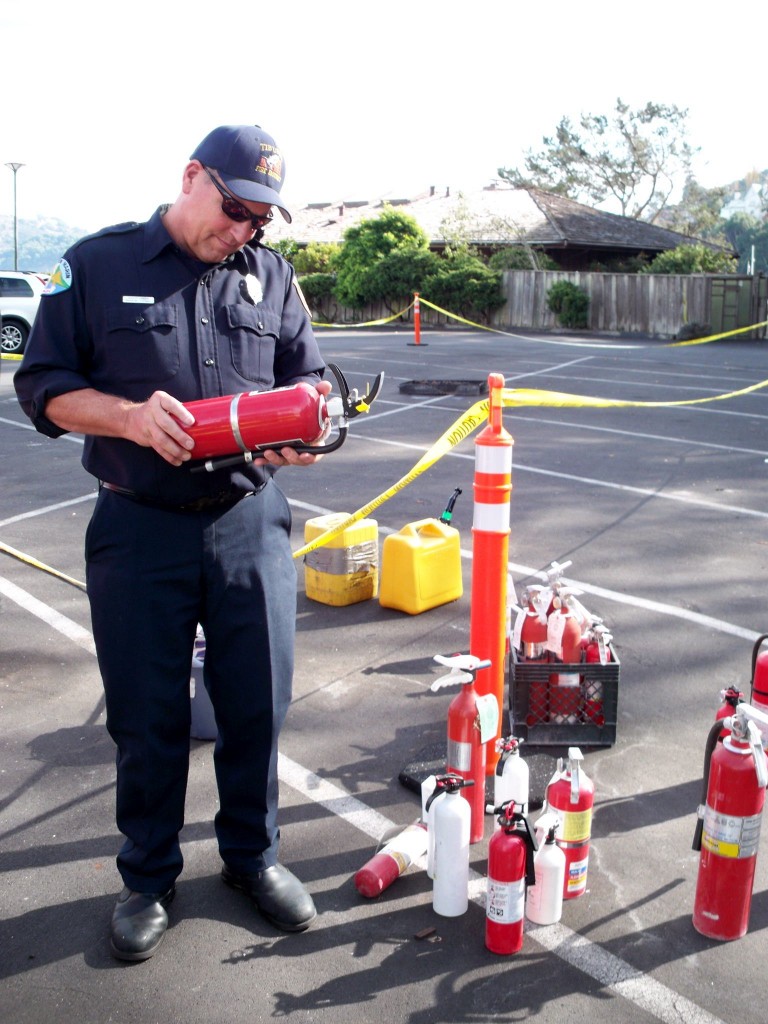
This is the size fire extinguisher required by ORC regs. Note the little white Kidde model on the ground.
- When you set off the typical dry chemical fire extinguisher inside a boat, the entire cabin is immediately covered by a cloud of fire extinguisher contents. Visibility goes to zero and it becomes hard to breathe. Make sure you are near an opening or exit.
- Orion brand non-SOLAS flares are all but worthless. We had a pile of expired flares that we could test and many of the Orion flares wouldn’t light. Even those that did were much more difficult to light than the SOLAS flares with a pull string igniter. Not only that, but the red handheld flares from Orion were only a fraction as bright as the SOLAS flares. See the picture below.
Not only did the Orion flares perform poorly, they were also dangerous. When I ignited one of the red handheld flares the flare ignited with a bang sending flaming bits everywhere including straight into my forehead. Fortunately, I was wearing safety goggles, but what if I was doing this for real at night (i.e. no eye protection)? Also, once ignited the Orion flare drips the equivalent of molten lava. Hot, burning stuff that would land on your deck, your foot, or your liferaft. Bad, bad, bad. Finally, the Orion flares don’t light if wet and go out if put in the water. SOLAS flares don’t have either of those drawbacks.
- ORC regulations require 6 SOLAS parachute flares, 4 SOLAS red-handhelds, and 2 SOLAS orange smoke flares. Having now seen the difference there is no doubt the SOLAS flares are more effective. Shockingly, different brands of SOLAS flares have the pull string igniter on opposite ends of the flare. So if you were used to one brand, grabbed another brand and pulled the igniter like you normally would, you would fire the flare right into your stomach. Know your flares!
- A laser flare, while not approved by the USCG and therefore you still need traditional flares, are highly effective, easy to turn on, last a long time, and can be turned on and off repeatedly.
- We tested our Spinlock Deckvest automatic inflating PFDs by jumping into a chilly San Francisco Bay. The water temperature was in the high 50’s! Yowza. This was a really worthwhile exercise. Seeing how it inflates, knowing where the manual inflate handle is, donning the sprayhood, swimming around on your back, getting comfortable in the water with all that gear on, manually adding air to the vest, and practicing climbing into a liferaft are things most people just don’t do. We also tested using the Deckvest thigh straps just as crotch straps. Personally, I found this immensely more comfortable and just as effective for keeping the inflated vest down. I tested this by jumping off the dock 4 different times. I’m also pretty good at repacking a Deckvest now.
- Speaking of liferafts… They aren’t easy to get into or move around in. I was “helped” into the liferaft once when there were already 5 or 6 people in an 8-man raft (i.e. it was pretty full). I ended up in the middle of the raft, head down, and feet up. I was pretty much stuck. With all the people, my PFD inflated, my foul weather gear on, and the non-slip fabric in the liferaft I couldn’t move from that position without assistance. You could literally drown inside a liferaft if you aren’t careful about how you enter.
- My Deckvest automatic light didn’t turn on. It seems the batteries were already dead. Good reason to test your gear periodically! I replaced the Spinlock light with an ACR L8-3, which seems to be more or less the same light, with a smaller battery, a shorter cord, and a lower price. I wasn’t too impressed with the battery pack for the Spinlock light swinging freely around on a 12” wire. Seemed like an easy thing to get tangled on other things. Spinlock now offers a little pylon light that sticks up about 8”. That seems like a reasonable option too. Edit: I thought about this overnight and realized the battery has to be on a longish wire in order to be in the water because it is water activated.
- Last year we bought new Wichard ORC double-tethers with carabiners that can’t open accidently. In concept this is the way to go, but the carabiners are really hard to open and pinch your fingers regularly (i.e. they can’t open on purpose either!). West Marine has a new ISAF tether available that is identical in concept, but with carabiners that can easily be operated with cold and tired hands. The difference is so dramatic that we are going to switch over to the West Marine model. I’ve been wearing my 15-year old tether with a simple snap hook on the end because I could actually get the thing to open so I could move about the boat.
- Going through the appropriate steps you should take once you are in a liferaft was really helpful. Cut the tether to the boat, deploy the drogue, close the canopy, and bail.
- We practiced righting an overturned liferaft. I found even the big 8-man to be pretty easy to right, but there is a method that works best. You have to use your feet and your arms. Your feet should be pushing down on a rope tied to the side of the raft, while your hands are hand-over-handing the righting line across the bottom of the raft. Simply pulling on the righting line without doing either of the above two things doesn’t work.
- Based on everything we learned at SAS, we’ve decided we will each carry a waterproof, DSC capable handheld VHF when on deck. A handheld DSC VHF seems like the most powerful tool for the person overboard and the person steering the boat to reunite.
- If you have plans to use two radar reflectors even if one is active, you might want to reconsider your options. Radar reflection is not additive. The reflections might actually cancel each other that. In fact, this is one of the principles the military uses to make ships less obvious on radar.
- Given the Spinlock “knife” that comes with a Deckvest is basically worthless (the instructor said he’d rather try to chew through a tether!) we found these cool Columbia River Knife Company Bear Claw knives that seem to actually work.
- We’ve been fretting over our trysail because we don’t have a second track on the mast to attach the trysail. We’d thought of alternatives, but they were awkward and would be difficult to carry out in rough conditions. Our instructor had a great alternative. Run a dyneema line down the side of the mast from an attachment point above the top of the trysail (we will use our checkstay attachments). Secure the line tightly at the base of the mast and hank the trysail (soft hanks?) to the line. I would probably add one loop from the head of the trysail around the mast to make sure the sail doesn’t move around too much. Effective, easy to install, and easy to remove when you sail in protected waters.
- If you’ve ever thought of using a sail as a patch on the outside of a holed boat, you might want to consider alternatives. First, a patch is really difficult to get in place quickly, and a sail doesn’t seem to seal very well. An approach that is likely to have a better chance of success is to plug the hole from the inside first. Stem the flow, then apply the patch to the outside, preferably with something intended specifically to be a patch. We carry a big Weblon triangle with lines attached to each corner.
- Bryan Chong, one of only 3 survivors from the Low Speed Chase Incident in April 2012 that claimed the lives of 5 sailors outside San Francisco Bay, stopped by and gave a presentation. It was tough stuff, but real takeaways from his presentation were know your gear, use your gear, and take personal responsibility for the safety of the boat you are on. He made the point that if 7 people all make safety a priority and one person does not, everyone on the boat is potentially at risk, because trying to rescue someone increases the risk to entire crew exponentially. Thanks Bryan for speaking out about safety. Lives are being saved now due to the increased awareness created by your actions and the Low Speed Chase Incident.
That’s a lot to take away from a two-day seminar right there and of course there were many other good reminders. Be careful out there.
Next week it looks like we are heading down to Port Aransas to sail Shearwater back to Seabrook. Here’s hoping for good weather.
3 comments
Leave a ReplyCancel reply
Sign up to receive blog updates
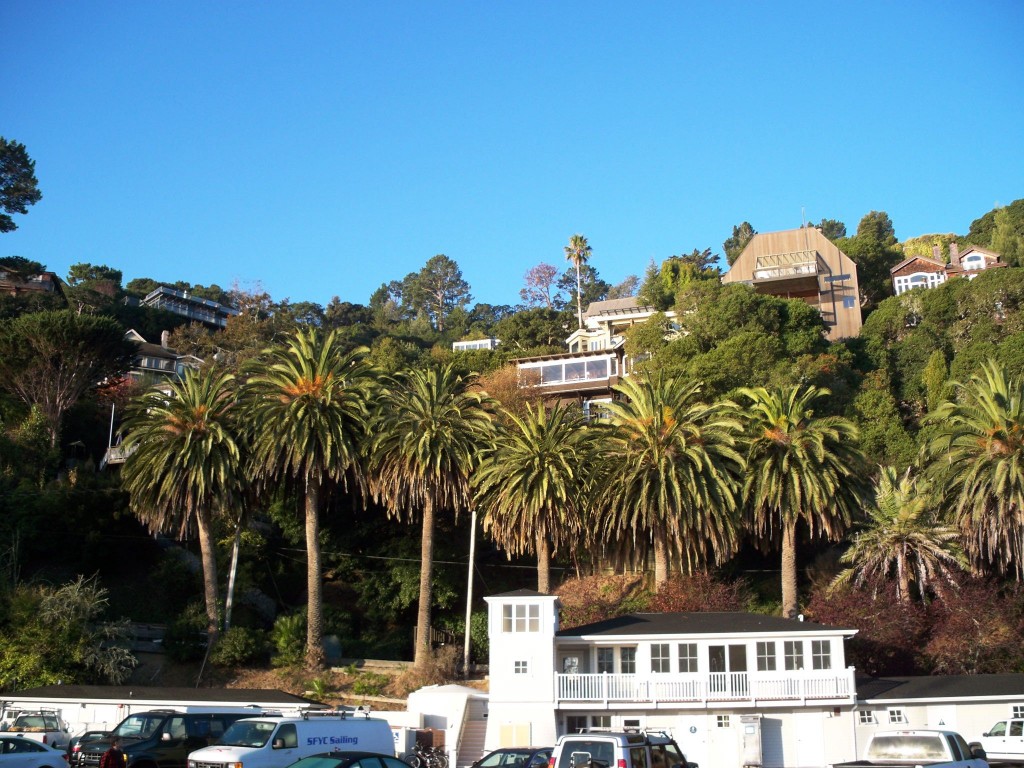
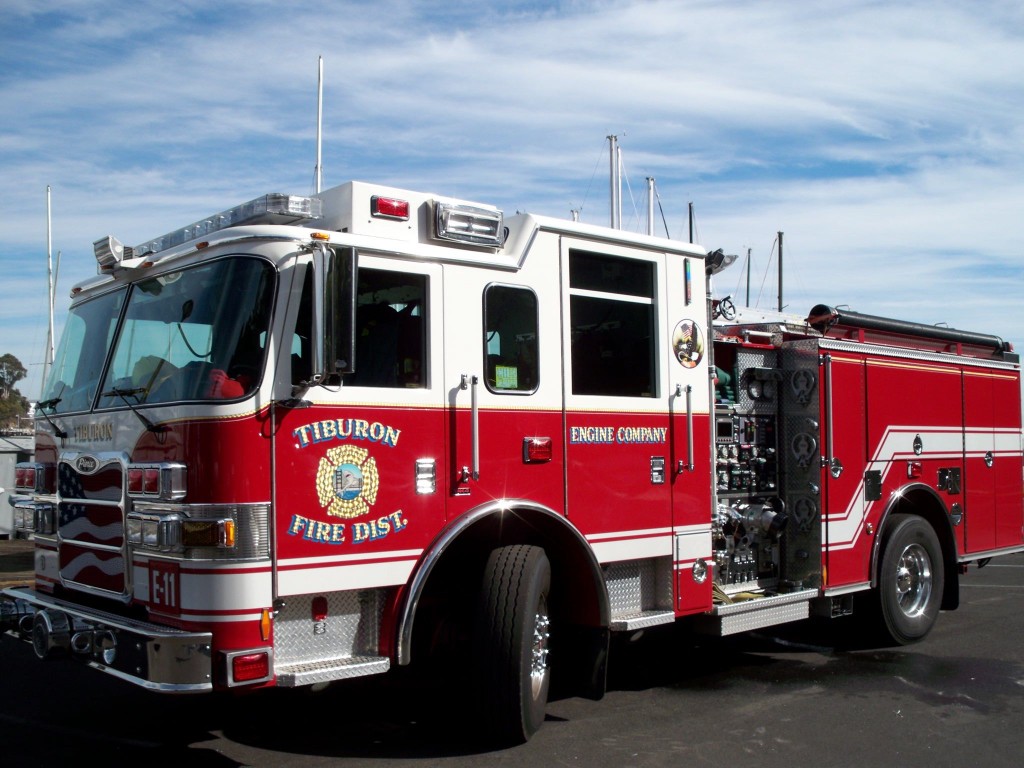
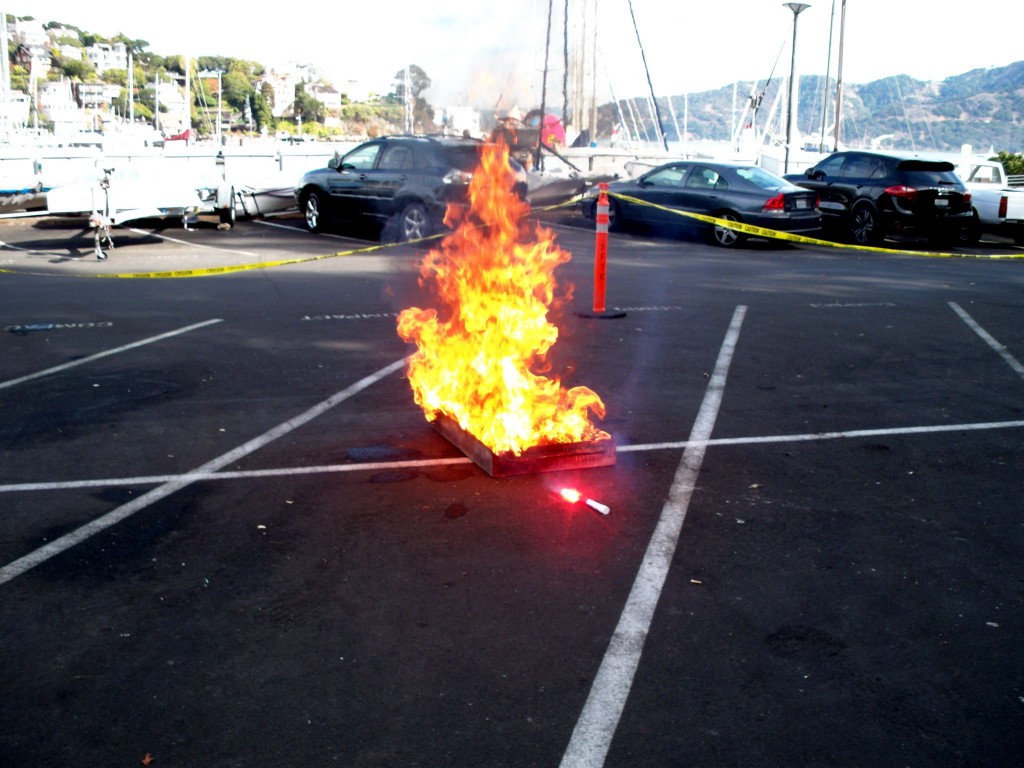
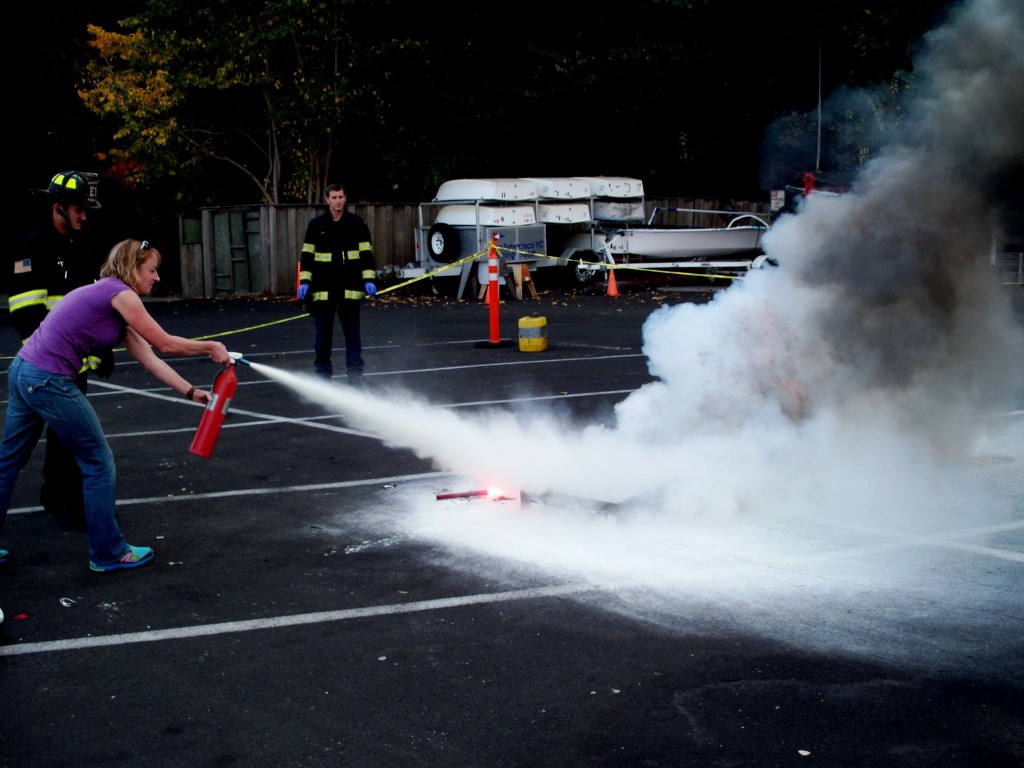
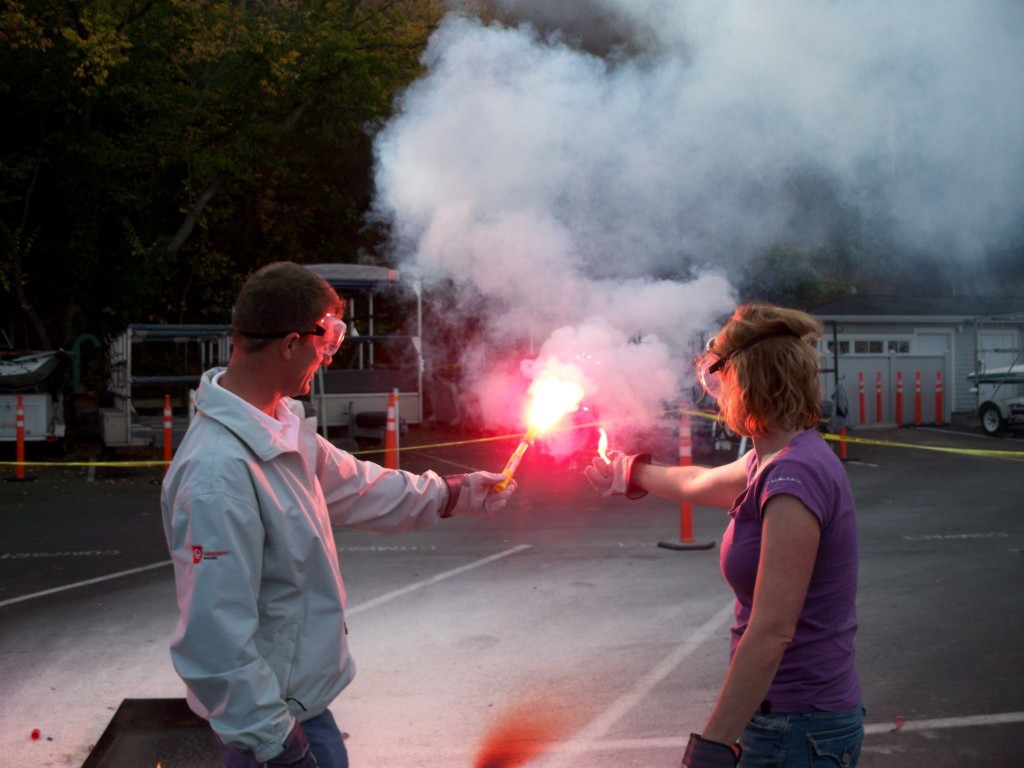
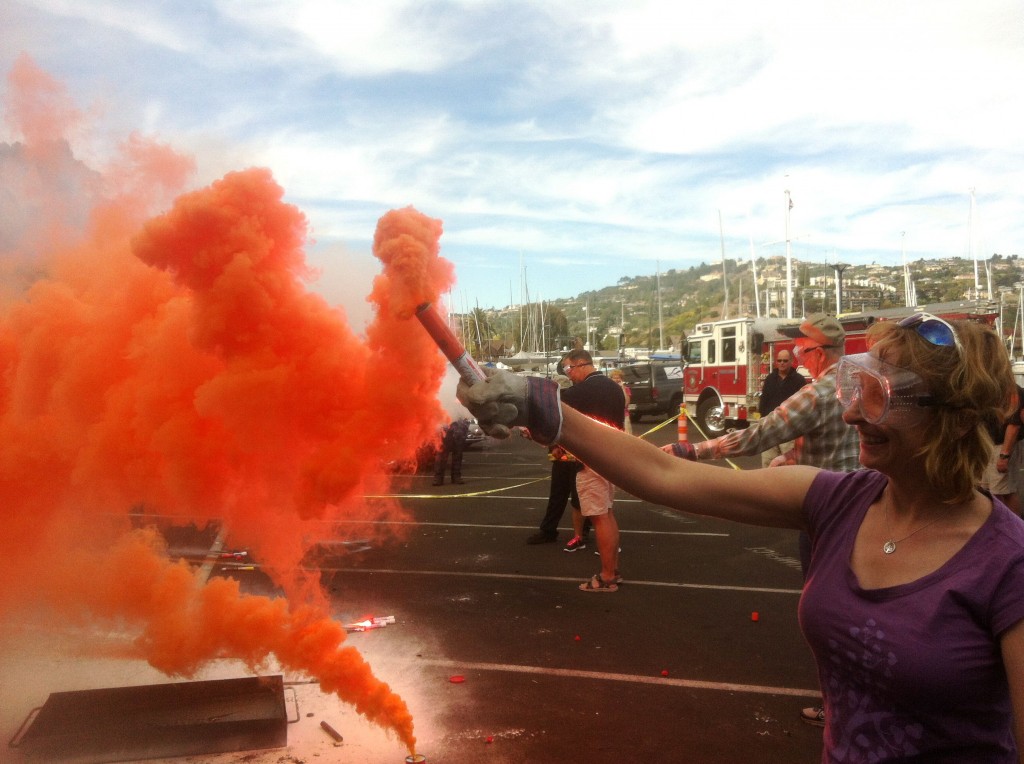
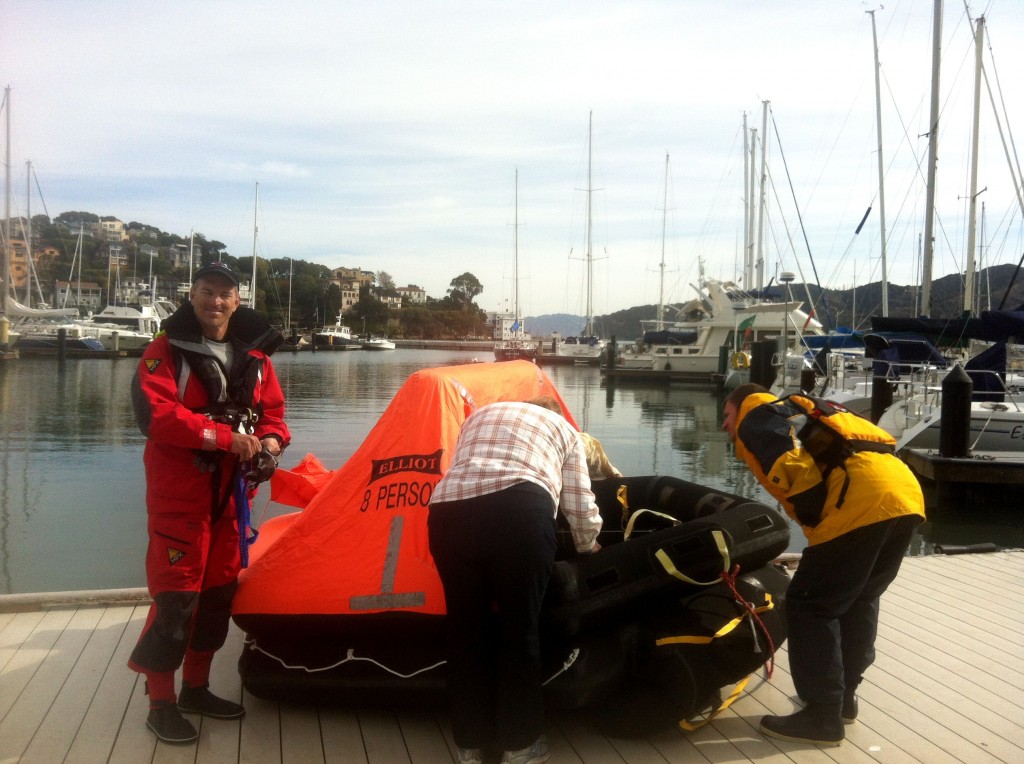
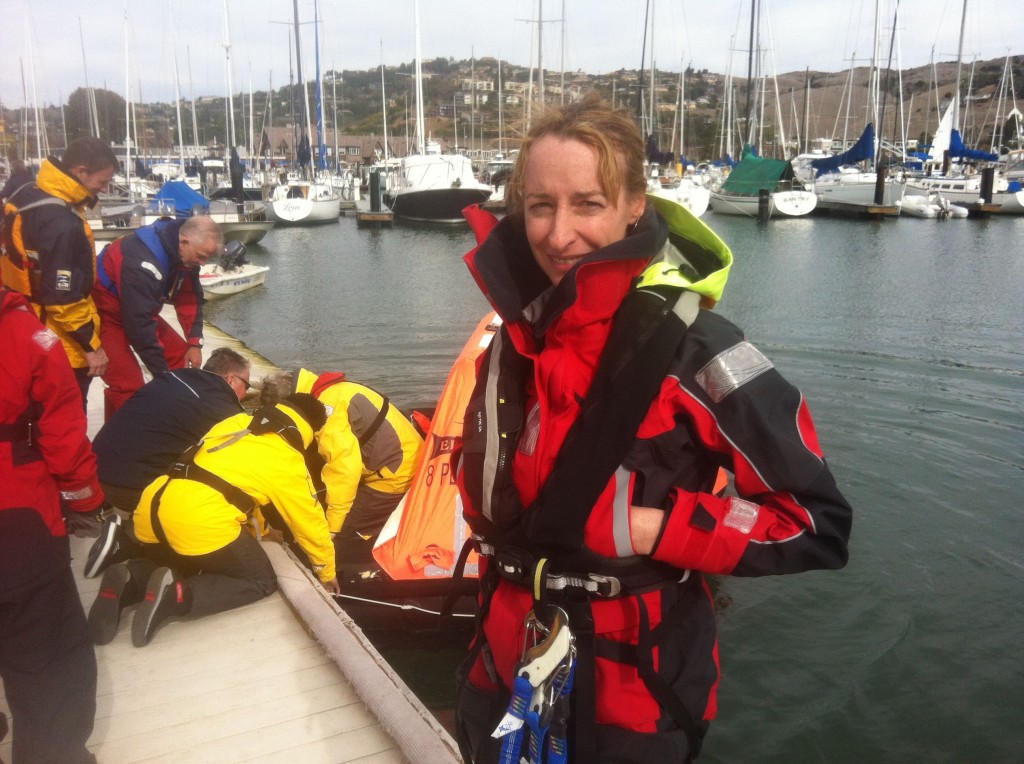
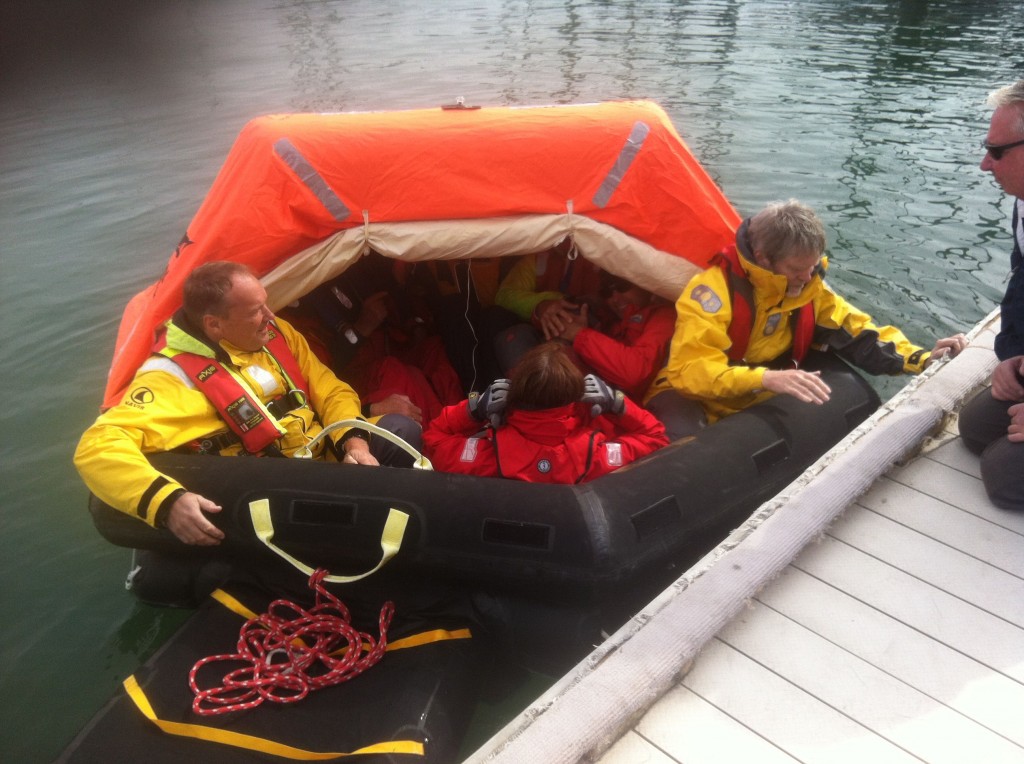
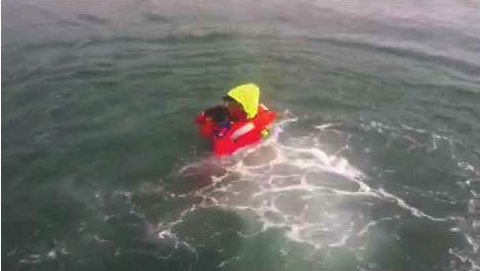
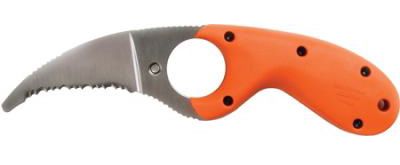
I have no experience in a life raft other than participation in demonstrations in safety at sea seminars held in Newport, Rhode Island. I do however have experience being knocked overboard from a 35 foot sailboat midway from Newport to St. George, Bermuda. The owner and I were the only persons on board in what was forecast to be our best weather ever but which deteriorated into the worst either of us have ever yet encountered. He was below wedged into sail bags and cushions on the sole and I was vomiting from the cockpit while the autopilot steered tiller struggled to point us to Bermuda. The boat, a trans-Atlantic veteran on which we had made several Bermuda passages labored nobly under triple reneged main and a very small storm jib. We each wore self inflating vests with harnesses, full foul weather gear and we’re shackled to hard points at all times. At about 2 PM, I heard a wave that sounded like a freight train approach. We had been battered for 2 days, had each lost about 15 pounds from sea sickness and we’re merely hanging on hoping to arrive alive. The wave hit, lifted me up, over the tiller and pilot ram and tossed me over the transom. I felt my tether and harness go taught, felt myself totally under water and could discern no light. When the wave passed, everything which had been secured to the deck was gone…and all had been tightly fastened. My gear held and I was able regain the cockpit by the transom steps. The owner rose from the cabin sole, saw I was absent then was…I think..pleased I had regained the boat. The boat continued to plow toward St. George through another 2 days of this. I sustained several broken ribs, two broken fingers and significant weight loss through dehydration. The owner did not fair much better. We stood watch wedged in pillows and cushions and did as little as possible to do anything but keep the strain off the boat to the point with it headed generally toward our destination. Our personal safety gear; tethers, jack lines, hard points, lights, inflatable vests, warm hats, gloves, multiple attachment points and rudimentary but good quality electronics were more than just comforting. The life raft, just out of refit, was a gift to the sea. We never seek out bad weather but find some times it tracks you down and all you can do is hunker down and wait for it to pass. A good boat, good company and proper gear is about the best you can hope for. We made the same trip, each way, the next year with no challenges. Advise? Use good gear; stay hooked to the boat
Did you try any Orion flares that were not expired?
David,
Unfortunately, no, all we had were expired flares. The SOLAS flares were expired too.